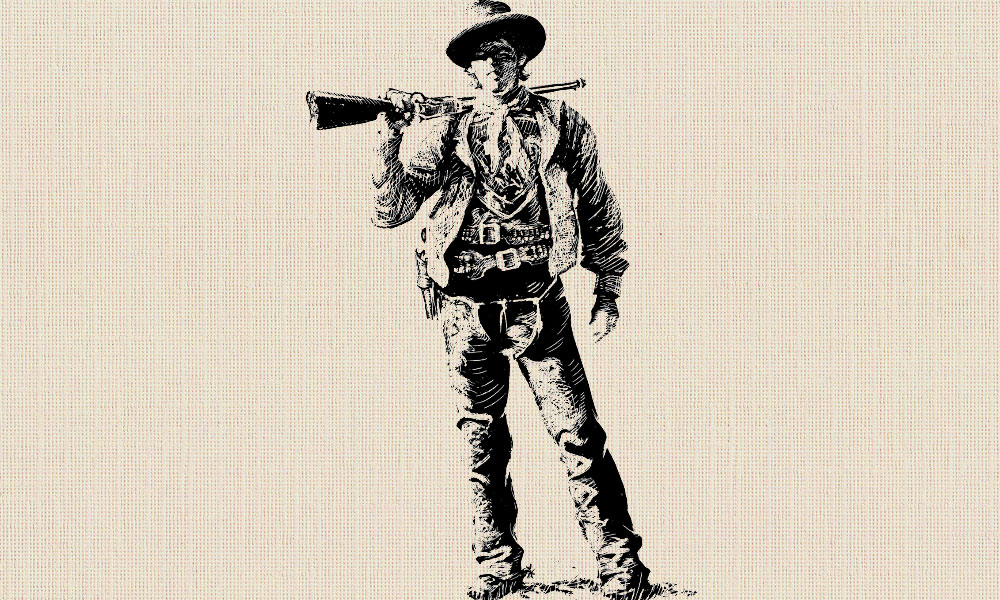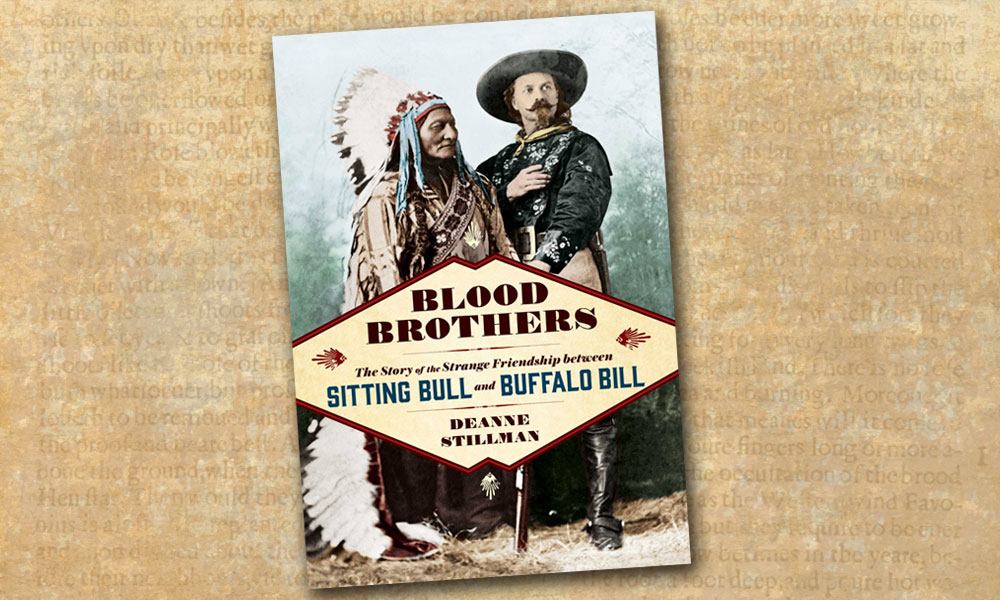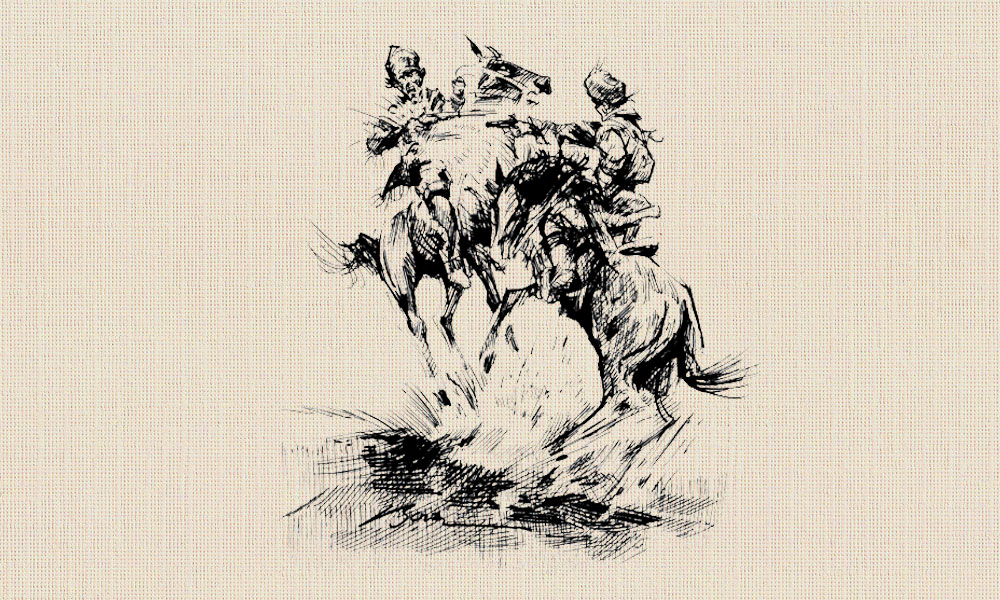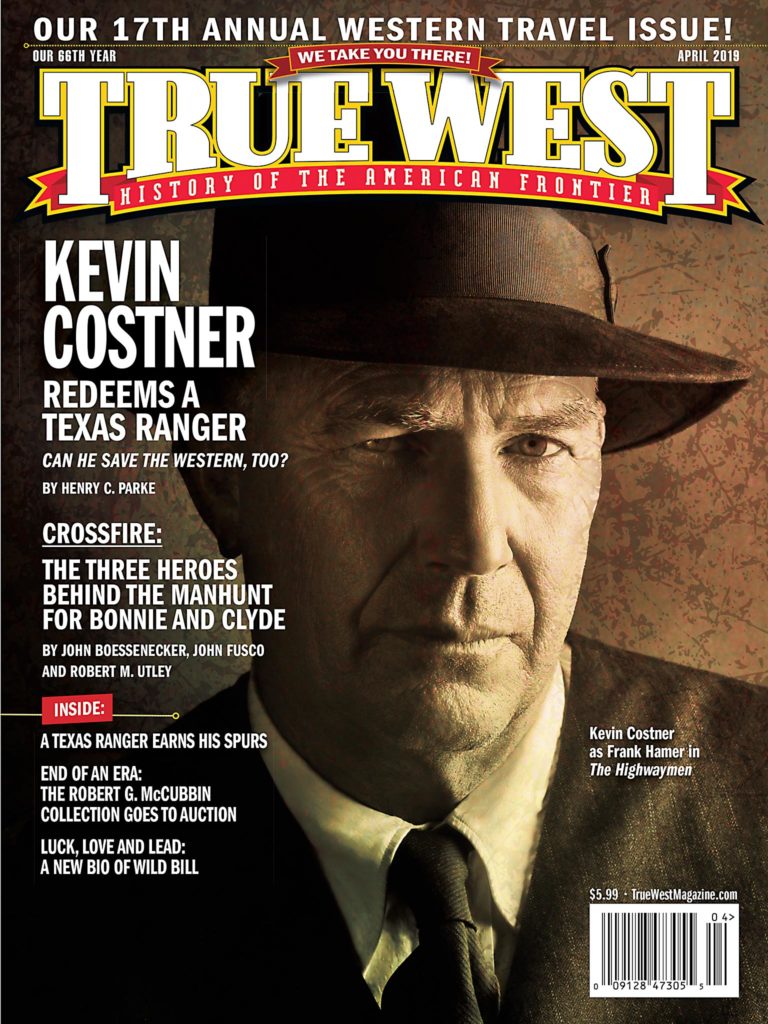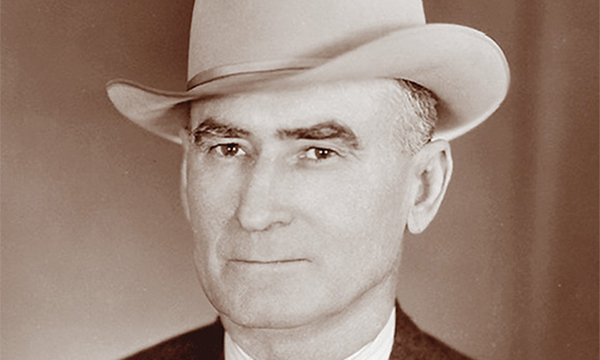
— All images Courtesy John Fusco unless otherwise noted —
White Rabbit
On April 1, 1934, 6’2” Frank Hamer was sitting, cramped, in his tiny Ford V-8 automobile in a lonely riverside migrant camp near the West Dallas viaduct, eating from a can of sardines and celebrating Easter Sunday alone. Or maybe he had driven home to Austin and was having a home-cooked dinner on Riverside Drive with his wife and kids, a periodic respite from his dogged and highly secretive multistate hunt for the natural-born killers known as the Barrow Gang. We don’t know—and we will never know—because part of Frank Hamer’s success as a Texas Ranger and manhunter was that he was intractably unwilling to talk.
What we do know, is that on that Easter Sunday, two highway patrol officers were out on motorcycle patrol near Grapevine, Texas. Somewhat relaxed on Easter morning—and woefully untrained—they came across a vehicle parked on the side of the road, as if disabled. A tiny but well-dressed young male and petite young female were loitering nearby. Both had gimped legs and paced nervously. The little red-haired girl was holding a white rabbit. An Easter bunny. The kids seemed as if they were stuck roadside and needed some help.
Nearby, farmer William Schieffer, who had observed the young couple “kissing and petting” all afternoon while the white bunny hopped about and grazed, was hauling rocks by the edge of the road when he witnessed the jarring barrage of automatic gunfire. The “little girl” gimped up to a downed and dying young cop and fired a point-blank kill-shot to his head from a sawed-off 20-gauge. There was laughter, and something said by the female that sounded like “Ya’ll see that? His head bounced like a rubber ball!”
Officer Wheeler was 23, on his first day assigned to motorcycle patrol. He did not have shells in his shotgun because he was concerned that if he “took a spill,” the gun might discharge and harm bystanders. He was to be married 11 days later; his fiancée wore her wedding gown to his funeral. She went to her grave in her 90s, cursing the glorification of Bonnie and Clyde—especially the 1967 movie.
The brutal double murder at Grapevine was a major turning point in the highly publicized pursuit of “Barrow and Bonnie.” Up until that Sunday, the self-promoting lovebird killers had been enjoying public fascination, a near-worship fueled by the Great Depression and a desperate public hunger for distraction and flashy anti-heroes. This brazen killing was also the urgent juncture at which Frank Hamer, a lone hunter from an earlier era of horse and Winchester, sought out a partner to join him on the hunt.
Hamer had been working in loose consort with Dallas Sheriff Smoot Schmid, Dallas Deputy Bob Alcorn, Deputy Ted Hinton and a few committed agents from Hoover’s prototype agency for the FBI (even as Hoover resented having an aging legend like Hamer on the case); but now Hamer specifically asked for a partner from his former Texas Rangers days, an old-school lawman he could count on—a former Ranger named B.M. “Maney” Gault.
Neighbors
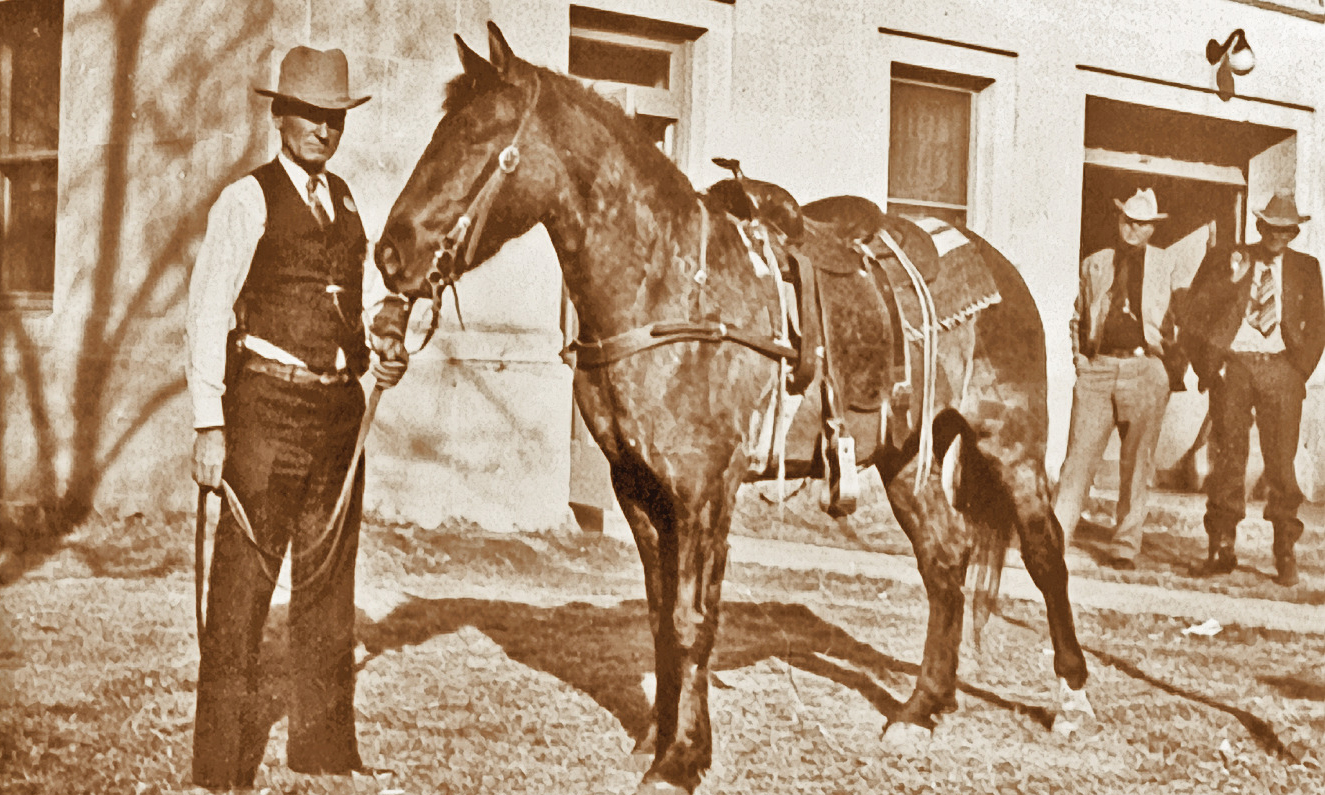
Frank Hamer had known Maney Gault since the mid-1920s, when they were neighbors in Austin. The diminutive, steely-eyed Gault had been a stock and dairy farmer until crashing milk prices forced him to find work in a sawmill. Regardless, he was a man after Hamer’s own heart—laconic, loyal, modest, conservative, sardonic and perfectly unbreakable. Hamer appreciated the fact that Maney was from a “Travis County pioneer family.”
As neighbors in the Riverside area of Austin, Hamer and Gault became tight, as did their feisty wives, Gladys and Rebecca. The late Frank Hamer Jr., a preteen then, remembered Gault being as “smooth as satin with a pistol,” but also proficient on the guitar. Captain Hamer was also a competent hill country fiddler, and the two spent many a night playing cards or dominoes, blue grass music, and sharing terse, wry, Texas-style stories. Gladys Hamer had a parrot in a cage who repeated every damn thing a body said; Frank had a pet javelina named Porky who had free run of the house. It was a lively time on Riverside Drive. Hamer, whom Gault called “Pancho,” was a casual and careful sipper while Maney “enjoyed his whiskey” and both were known to “cuss up a storm,” much to the amusement of young Frank Jr., who came to think of Maney Gault as an uncle.
This was years before Gault joined the Texas Rangers, but Hamer was already using his friend and neighbor for specialized undercover work. Maney might have been a cow man and mill worker, but Hamer recognized in him the ability to blend in and “talk his way through,” his lack of fear and the principled moral compass that Hamer valued above all else. He could also kick ass—literally, on more than one occasion. Hamer privately put his friend Maney underground during the rough-and-tumble days of Prohibition, illegal gambling and in lawless oil boomtowns like Mexia and Borger.
The Dust Bowl
As the Great Depression grew near and private sector jobs dried up—even the sawmills—Hamer offered his friend a job in the Texas Rangers Headquarters Company. Hamer and Gault now began to team together in earnest, particularly in the violent Jim Crow climate when African-American men were frequently lynched before due process and trials. Gault was likely among the handful of Rangers who stood with Hamer when he protected a black rape suspect from a lynch mob of 6,000 in Sherman, Texas. As senior captain, Hamer was leading the fight in Texas against the Ku Klux Klan.
Hamer and Gault worked seamlessly together as Rangers up until Miriam “Ma” Ferguson was re-elected as governor of Texas. Hamer and the Rangers had sup-ported rival Governor Ross Sterling, so when the truculent “Ma” won, she fired every Ranger (that is, those who had not already resigned in protest like Hamer and Gault) for their partisanship. Texas became a haven for lawless types, from Machine Gun Kelly to the Barrow Gang. Ma Ferguson was known for generously granting furloughs to prisoners, issuing more than 4,000 pardons during her two non-consecutive terms as governor.
While Gault found work with the Texas Highway Patrol, Hamer took on sporadic detective and security assignments. That’s what he was doing when when Lee Simmons, head of the Texas Prison System, recruited Hamer to hunt down the Barrow Gang.
End of the Trail
By April 14, 1934, Frank and Maney were back together—this time as Highway Patrol officers—sharing the cramped space of Hamer’s Ford and hunting down the notorious killers. Like their quarry, they slept in their car, drove 500 or more miles per day, and mostly lived on crackers and sardines. According to the late Frank Jr., they took guitar and fiddle with them—along with modern firepower.
So it was, that more than a month later (102 days all-in for Hamer), Hamer, Gault, Alcorn, Hinton (the Dallas cops needed to make the positive ID on the criminals), Louisiana Sheriff Henderson Jordan and his Deputy Oakley caught Barrow and Parker in their own pattern of running and put an end to the multistate menace that had left nine lawmen and four innocent civilians dead.
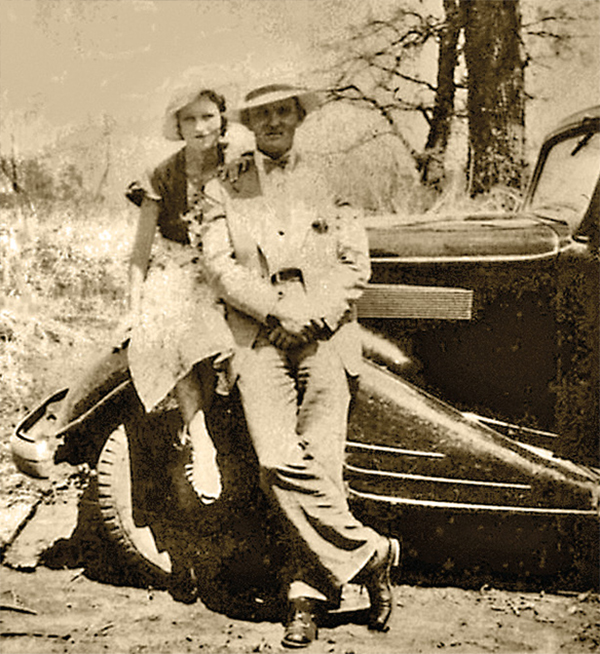
— True West Archives —
Maney Gault fired his share of rounds on that legendary, controversial and much misunderstood morning. To the very last moment, he was covering his friend Pancho in the silent aftermath when he was reported as yelling “Careful, Cap, they might be possum’n!”
Soon after Ma Ferguson left office, the Texas Rangers were reconstituted into a new state law enforcement agency called the Texas Department of Public Safety. It can be argued that Hamer and Gault had saved the Rangers even as they embarrassed J. Edgar Hoover (it is said that Hoover was livid when Hamer offered to go get Dillinger next).
The Austin newspaper ran a front page headline proclaiming: “HAMER-GAULT HERO DAY IS SET.” Citizens planned a testimonial dinner to be held for Frank and Maney on May 28th, with a speech by the governor. Frank and Maney rejected any such celebration. Other than an interview given to Walter Prescott Webb years later, Hamer only gave one interview at the time, to a reporter he knew and trusted, and Gault gave none. When rejected by Gault, one reporter described the former Ranger as “cold-eyed, mysterious, and he doesn’t talk.” Hamer turned down a $10,000 offer to have a book written about him and major movie offers, including one from Tom Mix. He returned to his wife, Gladys, and his quiet and modest work in oil security. Gault, however, returned to the Texas Rangers, serving as sergeant in Austin.
Not long after the ambush of Barrow and Parker, the bullet-pocked death car reappeared in public. A local carnival operator named Charles Stanley purchased the mangled vehicle from its original owners and took it on tour under his new billing as The Crime Doctor. For a time, he even had Barrow’s and Parker’s parents and other relatives on the road with him, making some cash off their deceased children.
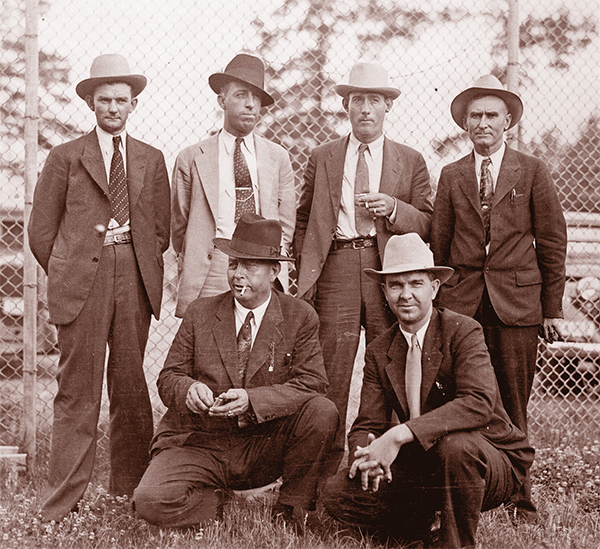
At an appearance in Austin, as Stanley showed off the Death Car, presented gruesome slides of photos and spoke openly about Hamer’s confidential sources, two figures approached from the packed house. Frank Hamer and Maney Gault came up on stage and confronted the carney. With the diminutive but steely-eyed Gault on one side, Hamer slapped Stanley in the head, confiscated the slides and threatened him with more serious action if he continued his side show.
Within five years, Maney Gault was promoted to Captain of C Company in Lubbock. His territory covered some 94 counties in west Texas, extending from the Panhandle to the Rio Grande. During the 10 years he served as captain, Gault solved many cases involving murder, bank robbery and cattle rustling.
Some say that Gault was a dogged lawman to the detriment of his own health. At 61, he was still working on an unsolved murder, when he fell ill. He would die on December 4, 1947, in Austin. Hamer eulogized him as “a 23-karat fellow. He was as loyal a man as there ever could be. Never a better man or truer friend than Maney Gault.”
The Highwaymen
Three-time Academy Award nominee Woody Harrelson had wanted to play the role of B.M. “Maney” Gault for more than ten years. While most actors, from Robert Redford to Tommy Lee Jones to Liam Neeson, wanted to portray Frank Hamer, Woody was greatly drawn to Maney Gault. It should be mentioned that so was Paul Newman before he became ill.
While historical information on Gault is spare, Harrelson was fascinated by a story about an oil boomtown that once requested the Texas Rangers’ service. “Some guy came into this town and was just terrorizing people,” says Harrelson, a Texan himself. “The Rangers sent one guy, Maney Gault, to deal with this whole group. The gang leader was inside a barn, so after clearing it of civilians, you hear all this crashing and everything, and then Maney comes out, holding the guy by the back of the shirt, just kicking him in the ass all the way down the street!”
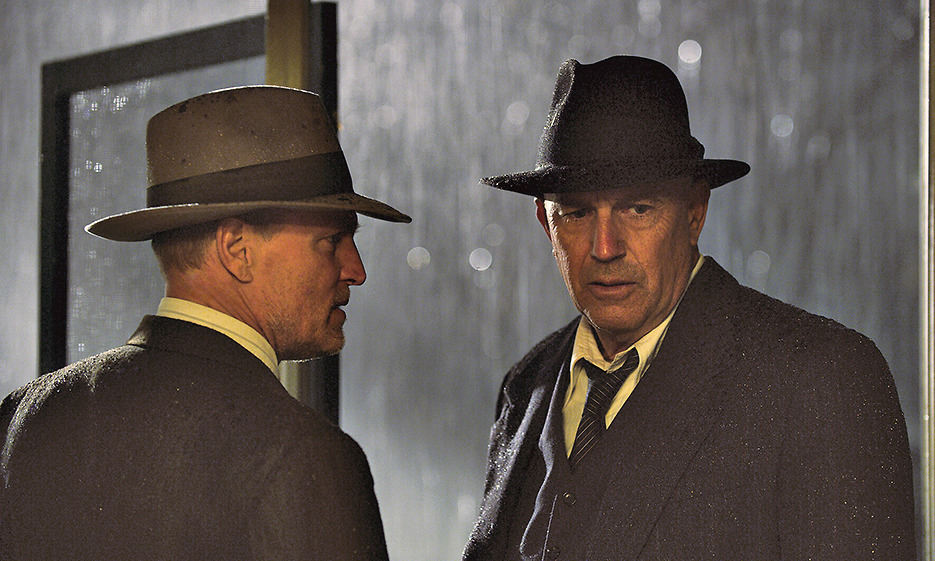
— Courtesy Netflix —
While the movie character is true to the spirit of Maney Gault, creative license almost always needs to be employed in creating a historically based drama. In the case of The Highwaymen, and with full disclosure, some character traits were borrowed from some of Frank Hamer’s other Ranger allies, in the interest of portraying the old-time Ranger ethos that made the pursuit of Bonnie and Clyde thematically unique and emblematic of putting old-time Texas Rangers on the trail of modern-day gangsters.
While Frank Jr. recalled that Maney liked his drink (bourbon, he told me), the filmmakers and Woody Harrelson took this idea deeper and darker to reflect the moral complexity of violence and how some on the front lines “drink to forget.”
It should also be pointed out with clarity that during the pursuit of Bonnie and Clyde, Frank Hamer wanted one man and one man only; that was Maney Gault—one of the Rangers who had resigned in protest alongside Hamer when Ma Ferguson was reelected—and Hamer personally sought him out.
Other pieces of the character composite were inspired by Texas Rangers like Dan Hines and Leo Bishop, Rangers who served during the Great Depression because
of dire economic circumstances; they
had been living in poverty. Historically, while Gault may have been forced, at one point, to find work in a sawmill when the stock and dairy industry suffered, he
was supporting his wife, Rebecca, and their two children through stellar employment with the Texas Highway Patrol.
As Capt. Frank Hamer is finally being introduced to the public as the true hero in the Bonnie and Clyde story—and not the mustache-twirling villain from the 1967 movie—Capt. Maney Gault should also go down in history as one of the reluctant heroes on that day, and one of the greatest Texas Rangers of all time.
Screenwriter John Fusco’s most recent screenplay chronicles Frank Hamer and Maney Gault’s manhunt of Bonnie and Clyde in the Netflix film The Highwaymen, which debuted in theaters March 29, 2019. He was the recipient of True West’s 2019 True Westerner Award.

